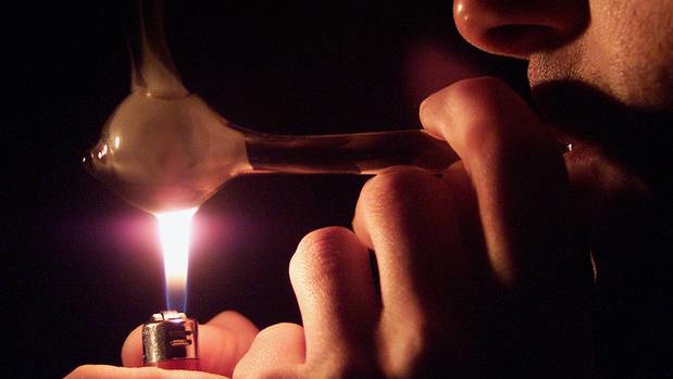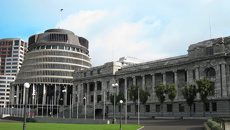
A recently unearthed medical journal finding has shed damning light on New Zealand's meth contamination testing system, finding it completely out of touch with any other nation or scientific consensus.
The International Journal of Environmental Research and Public Health released a global comparison of regulations around homes contaminated with methamphetamine residue, comparing New Zealand to similar nations such as Australia and the United States.
The report is damning.
It found that the threshold for contamination nationally is ten times higher than our contemporaries, and that the widely publicised “debunking” of the risk of methamphetamine relied on a single non-transparent report by the then-Prime Minister's chief science adviser Sir Peter Gluckman.
This report was not released via a peer reviewed medical journal and failed to acknowledge that the report's findings contradicted other government-funded research.
“The PMCSA report has instigated major changes in the public housing sector, yet the public are unable to view or verify the research that is used to support these changes. This lack of transparency is concerning, as at present there is significant confusion and misinformation surrounding methamphetamine contamination and its remediation and government reports should address, rather than increase, this confusion.”
Before the release of the chief science adviser’s report in 2018, New Zealand had a consistent level of 1.5 µg/100 cm2 (1.5 micrograms per 100 square centimetres) as the threshold for dangerous meth contamination of a property, which is the same as Australia and the United States currently use.
During the same year, the Institute of Environmental Science and Research Limited (ESR), our national scientific research institute, suggested a limit of between 0.5 µg/100 cm2, the then limit, and 2.0 µg/100 cm2.
The report recommended a limit of 15 µg/100 cm2, but in comments during a joint press conference with then-Housing Minister Phil Twyford, Gluckman questioned whether meth residue testing was ever needed.
The International Journal of Environmental Research and Public Health report responded: “This is concerning, as the contamination level can only be determined if testing is performed. [The New Zealand] approach requires that drug manufacturing paraphernalia, or specific visual staining, must be present as evidence to suspect manufacturing. However, it has already been well established that it is not always obvious whether a property is a former clandestine laboratory.”
Housing New Zealand adopted the CSA recommended limit as the threshold for decontamination of state housing. This has resulted in some of our nation's poorest families likely suffering lifelong respiratory damage, damage that was entirely avoidable.
How such a decision could be made in spite of multiple government-funded reports recommending a vastly lower level, and reported by virtually every media outlet in the country as a “debunking”, is a story of political point scoring and a media that accepts “expert” opinions with little vetting.
On May 29, 2018, Radio NZ published a story titled “Meth house contamination debunked by PM's science adviser”. Gluckman is quoted as saying, "I can't see the point of [meth] testing fullstop - unless the Police or the forensics suspect it has been a place of synthesis."
The article also quotes Twyford, who claimed “dodgy meth contamination rules have led to hundreds of millions of dollars being wasted and people being unnecessarily evicted from their homes”.
This is one example of many, of how the health risks of meth contamination were framed as another senseless moral panic, like Satan worship or reefer madness, by the then-Ardern government.
On the same day as the Radio NZ story, the NZ Herald published “Meth-testing in homes - don't bother, says chief science adviser Sir Peter Gluckman”.
Stuff published its own version of this narrative, “Meth house myth: Why hundreds of safe homes were left empty in middle [sic] of a housing crisis”, on June 1, 2018.
Dozens of articles from virtually every major news outlet in the country shared this as fact, based solely on one report. A report, guidance really, from a political appointee who hadn't submitted his findings to any medical journal.
That one report could completely settle a debate, especially one not supported globally, is astounding. It's also not.
The political landscape at the time was just right for such a situation to occur. You had a newly created chief science adviser role, a political appointment but one looking for public approval.
You had a new government elected on a campaign of “caring”, and keen for any opportunity to frame the previous government as uncaring.
Importantly, you had families who had to be removed from state homes, sometimes even emergency housing, for something we were being told was an overreaction by an apathetic government and public service.
This is the type of medical story the media loves because it is easy to simplify to a universal binary around good and bad - the political party that just lost an election bad, families facing homelessness good.
The reality is more complex and was addressed by the journal’s report.
“The acceptability of exposing residents to ´low´ levels of methamphetamine contamination to avoid disrupting their housing arrangements is debatable and is a decision that needs to be made in light of all available evidence.”
This is the peer reviewed, medical journal equivalent of an eye roll.
The journal concludes: “The conflicting reports [by the PSA and ESR, but also by the Ministry of Health and Standards NZ, which both suggested a far lower level than proposed by the PSA] are likely to cause confusion and uncertainty and could potentially increase mistrust in government and standardisation bodies that exist to provide support and structure for the general public.”
Politicians and the media need to be careful not to unduly stoke mistrust in our public institutions. Sadly, in this instance, that is the likely outcome of such an abject example of poor governance and reporting.
Gluckman is no longer the Prime Minister's chief science adviser. Twyford is no longer a minister. Yet their questionable policy, and the legacy of misinformation it has created, remains.
In response to questions from ZB Plus, the Minister of Housing, Hon Chris Bishop said: “I understand there is debate and lack of clarity about acceptable methamphetamine contamination standards and what should be done when residue is found in residential properties. I agree this needs to be addressed.
“No work has begun on this issue as I have been focused on the pressing priorities in the housing portfolio like introducing a priority one category on the social housing waitlist, the review of Kāinga Ora – Homes & Communities and our plan to liberalise housing markets and increase housing supply.
“I will be taking advice on the issue of methamphetamine residue in residential properties later this year.”
Take your Radio, Podcasts and Music with you









